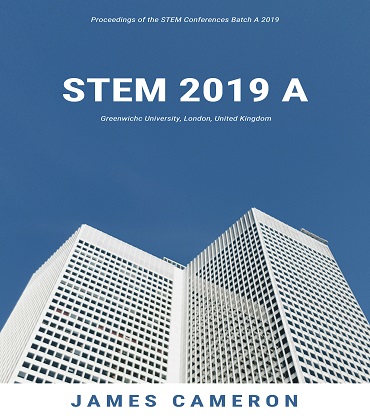- Publication Meta:Value
- Short Title:STEM A 2019
- Publisher:ASDF, India
- ISBN 13:978-93-88122-04-7
- ISBN 10:93-88122-04-6
- Language:English
- Type:Hard Bound - Printed Book
- Copyrights:STEM A Organizers/ DCRC, London, UK
- Editor-in-Chief:Dr James Cameron
- Conference Dates:03 - 04, January 2019
- Venue Country:London, United Kingdom
- Submitted Papers:355
- Acceptance Rate:8.25%
- Website:www.stemconferences.com
Welcome to ASDF Electronic Digital Library!
StemConferences 2019
StemConferences 2019
International Conference on Architecture and Civil Engineering 2019
Paper 008
A Study on the Practical Characteristics of 3D Printing Architecture
Jisoo Kim1, Jae Eun Yoon2
Abstract
3D printers are used in various fields for designing, manufacturing, and production. They have emerged as new tools that blur the boundaries between consumers and producers. This study focuses on architectural applications of 3D printing technology and analyzes the practical characteristics of 3D printed architecture present in various countries. In this study, we examine the practical applications of 3D printing in architecture in terms of economics, morphology, and the environment. Firstly, the economic advantages of 3D printed architecture result in reductions in construction times, manpower, and overall expense. Secondly, diverse design expressions have appeared that use various geometric curves which broaden the morphological aspects. Lastly, 3D printing can increase the use of recyclable materials thus minimizing environmental waste. The advantages of 3D printing align with what architecture of the future aspires to. 3D printing is currently a technology used in many fields, however it is still developing and is expected to become increasingly useful in architecture in the future.
Keywords
Author's Profile
Author profile can be generated and linked through our partners World Book of Researchers. To include your profile online Click Here. After it is approved, please email to edlib @ asdf.res.in to create a link with all the papers.
e-AID
StemConferences.2019.008
Cite this Article as Follows
Jisoo Kim, Jae Eun Yoon. A Study on the Practical Characteristics of 3D Printing Architecture. International Conference on Architecture and Civil Engineering (2019): 04. Print.
© 2010 - by EDLIB .
All Rights Reserved.

